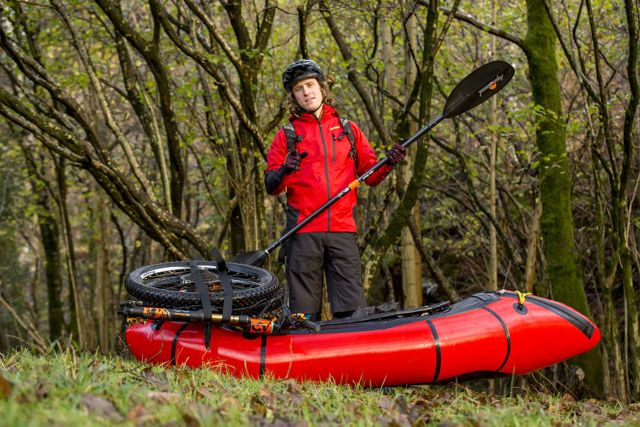What’s So Cool about Packrafting?

Modern packrafting was born largely due to mother-son team Sheri and Thor Tingey, founders of Alpacka Raft. There are now a handful of companies that make packrafts—a good sign of its growing popularity.
A quick Google search yields articles about packrafting all over the world: New Zealand, the UK, Scandinavia, Patagonia.
So what’s packrafting all about and why is it getting peoples’ attention?
Packrafts are Oh-So Portable
The whole idea behind packrafts is their ultra-portability. You can stuff one in your backpack. Strap one to the handlebars of your bike. Stow one behind the driver’s seat of your little economy car.
In other words you can take them in ways and to places it’s hard or impossible to take hardshell boats like canoes and kayaks.
Alpacka Rafts’ smallest and most affordable packraft, the Scout, weighs under 3 pounds. 3 pounds! Even the largest ones designed to carry hundreds of pounds of gear and two people weigh less than 14 pounds and roll up to under 2 feet long.
That’s portable!

(By the way, your paddle can be oh-so portable, too—take a look at Aqua-Bound’s Most Packable Paddles. Any of the kayak paddles featured here work for packrafting.)
Packrafts (Good Ones) are Super Tough
These boats are designed to last for rugged, no-nonsense wilderness travel. They’re made of durable synthetic materials that are made to take a beating.
As they’re becoming more popular, though, knock-offs are joining them in the marketplace. Cheaper in price, but not necessarily as tough in construction or materials. We suggest you research carefully to be sure the one you buy will hold up to the conditions you’ll paddle in.
Here’s a good article that covers a brief history of packraft manufacturers, who currently makes them, and what to expect from each manufacturer and their products (published in 2017).
Packrafts Make Sea/Land Wilderness Trips Possible
Whether it’s 600 miles through Alaska, or 8 miles in Glacier National Park, modern packrafts make it easier than ever to combine water and land travel.

Not only can you pack your raft on your bike—you can pack your bike on your raft. Bike a few miles upriver and float back down. Or plan an ambitious wilderness trek that combines overland mountain biking with paddling the lakes and rivers..
Now you can hike into the mountains and do more than just admire the hidden and pristine alpine lakes—you can paddle them.
Hikers, bikers, big game hunters and anglers all have discovered the advantages of using packrafts in their sports.
Packrafts Can Handle Whitewater
Any packraft can handle slow-moving rivers and mild rapids. But rafts designed for whitewater can handle pretty much anything a river can dish up. Their portability, maneuverability and durability are all reasons more and more paddlers are trying packrafts on rivers and loving it.
Packrafts can be Used at the Family Cabin, Too
You don’t have to be a super-adventurer to enjoy packrafting. They’re so light to carry around…easy to store…easy to maneuver in the water.
Packrafts are versatile additions to the family cabin or casual camping trip because:
- Paddlers of all ages can use them with ease…
- The anglers in your group can use them as fishing boats…
- The kids can play bumper boats with them.
- Some people have been known to use them as sleds in the winter!
Are you ready to give packrafting a shot? Because of their light weight (and lack of local rental options), many packraft makers will ship a rental boat to you to try out. Just ship it back when you’re done.
Happy paddling!
(All photos courtesy of Sam Flanagan)
Have questions about picking out a packraft paddle? Give our Wisconsin-based customer service team a call or email today. They’d love to help you. 715-755-3405 or sales@aquabound.com.
More posts for you:
- Retailer Spotlight: Alpacka Raft, Colorado
- The 4 Best Beginner-Friendly Rivers for Packrafting in New Zealand
- Aqua-Bound’s Most Packable Paddles





